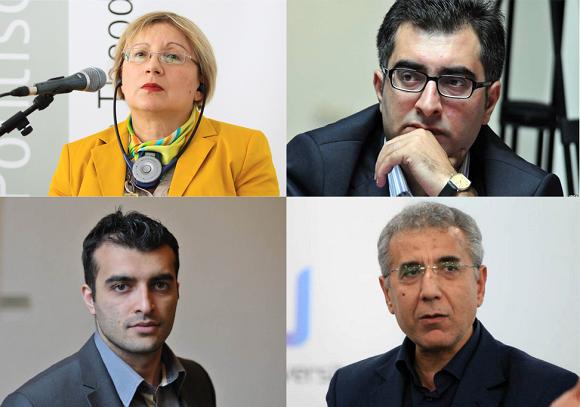The list now comprises of 80 names, as compared to the 98 which were included in the list published in August last year. Although this means that there have been some very welcome releases, the Government of Azerbaijan continues its policy of imprisoning what they consider opponents. The last few weeks, prominent human rights defenders Rasul Jafarov and Intigam Aliyev were convicted to many years’ prison. In 2014, Political Prisoners in Azerbaijan received the Sakharov Freedom Award from NHC.
To draw attention to the growing number of political prisoners in Azerbaijan and the unprecedented wave of repression seen of late, civil society organizations operating within the country present this report. The number of politically motivated arrests, detentions, and imprisonments has increased sharply after the 26 January 2013 defeat of a Parliamentary Assembly of the Council of Europe (PACE) resolution on “The follow-up to the issue of political prisoners in Azerbaijan.”[1] Astonishingly, the situation has become even worse since Azerbaijan assumed presidency at the Council of Europe Committee of Ministers on 14 May 2014.
In April 2015, the report was updated; the names of the released political prisoners were removed from the list, as well as those new prisoners, who were arrested after the list of 98 political prisoners was prepared, were included in the report.
This report contains a list of cases of those currently detained or imprisoned on politically motivated charges. The list has been drawn up according to the criteria set out in PACE Resolution No. 1900, from 3 October 2012.[2]
To compile this report, a series of consultations were conducted with local human rights defenders who: 1) studied relevant reports of local and international human rights organizations; 2) examined documents from influential international organizations that Azerbaijan is member of, and has commitments to – in particular, the Council of Europe; 3) monitored the press; 4) monitored court cases; 5) examined court verdicts and other legal documents; 5) and interviewed the families, lawyers, and defense committees of the political prisoners included in this report.
The report provides detailed information about each of the political prisoners, including the facts and circumstances of their arrests, political motivations, and photos. (Photos were not available for every prisoner.)
Cases included in the report are divided into seven categories:
- Journalists and bloggers
- Human rights defenders
- Youth activists
- Politicians
- Religious activists
- Life term prisoners
- Other cases
The last three categories are divided into subcategories, which are detailed in the report.
